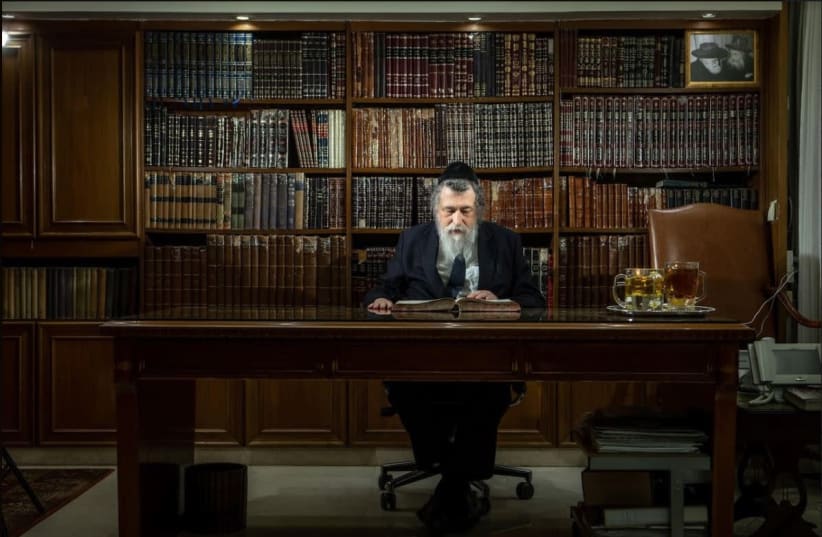The British, says Rabbi Isaac Schapira, meticulously maintain the graves of 1.7 million soldiers, in 150 countries and 22,000 cemeteries. If anyone would even suggest, much less dare encroach on these sacrosanct sites, there would be international outrage, he asserts.
The rabbi asks how is it possible that not only do thousands of Jewish cemeteries across Europe lie abandoned and neglected, but cities, towns, businesses and farmers are able to violate and seize these sites without a murmur from the Jewish world.
It was to redress this situation that Schapira established the European Jewish Cemeteries Initiative (ESJF) in 2015 to begin identifying, mapping and protecting thousands of Jewish cemeteries across Europe which were abandoned following the decimation of the Jewish population in the Holocaust.
According to Schapira, there are some 10,000 abandoned Jewish cemeteries in central and eastern Europe.
During his time working on this project, he has seen many cemeteries in a state of total neglect, rubbish and empty bottles of alcohol strewn in some, various animals roaming in others; some where tombstones have been removed over wide expanses of the site and used, for example, as a weekly farmers market.
A former cemetery in Vilinus, Lithuania, is now a 4,800 seater stadium, while a kindergarten was built over part of a cemetery in Zbarazh, Ukraine. Parts of one Belarus cemetery were so badly destroyed that graves and the remains inside were exposed.
In one case, in a country Schapira declines to name, there was a shortage of burial space for the non-Jewish residents of the town and so Jewish remains were exhumed from some graves, deposited in an unknown location, and the non-Jewish dead interred there instead.
This was the worst incident of desecration encountered and deeply shocked the rabbi. The municipality made a solemn promise to ensure that it never happened again and pleaded with him not to disclose the identity of the city in question for fear of an international outcry.
“Each cemetery that [still exists] today is a miracle, because after 75 years of no one taking care of them, they fall into ruin and we show that they are not of interest to us,” said the rabbi during an interview in Tel Aviv.
Some of the highest risks to Jewish cemeteries are from municipalities seeking new land, while farmers whose land abuts a cemetery can be tempted to encroach onto it, as can factories which need extensions for other businesses, says Schapira.
ESJF WAS established in Germany as a nonprofit foundation, to deal with these problems. It has received funding from the German government, the EU, and the United States Commission for the Preservation of America’s Heritage Abroad. Schapira has also donated money to the project.
Since its inception in 2015, the organization has walled and fenced 123 cemeteries in seven countries, including Ukraine, Russia, Belarus, Moldova, Poland, Czech Republic, Slovak Republic and Serbia.
This year, it received a grant from the EU of 800,000 euros which will be used to map 1,500 Jewish cemeteries in central and eastern Europe, and ESJF hopes to obtain similar grants for the coming years. The organization is combining both historical records together with modern, hi-tech solutions, to identify and map these cemeteries.
Physically walling or fencing a cemetery is the best way to demarcate the site, protect it from random vandalism and desecration, and prevent future encroachment, says the rabbi.
But the sheer number of graves means that walling all 10,000 cemeteries is a task beyond ESJF’s capacity.
Mapping out the cemeteries is an effective way of demonstrating that the global Jewish community is aware of them, cares about them, and will not let them be desecrated, he says.
Although the vast majority of cemeteries found are not walled by ESJF at the moment, each one is nevertheless marked with a post and sign bearing the EU flag, stating that it is a Jewish cemetery surveyed by order of the EU, which provides further deterrence to would-be encroachers.
The rabbi says that whenever ESJF maps and walls a cemetery, it is done in coordination with local authorities and the requisite planning permission is obtained.
Although Schapira acknowledges that the ESJF “cannot even dream” about obtaining funds to wall off and restore every one of the 10,000 cemeteries at this stage, he says that the mapping project will at least stop any more from disappearing off the face of the map.
He also hopes that the mapping project will allow private individuals to take their own initiative in funding the protection of cemeteries where their ancestors are buried, saying that ESJF will be able to give “an immediate estimate subject to tender” for how much it would cost to wall specific cemeteries and how long it would take.
The rabbi has also successfully lobbied for assistance from the Israeli government, which in March passed a government resolution to establish within 90 days an inter-ministerial committee to deal with the challenges and requisite actions required to preserve and map Jewish cemeteries in Europe.
“It is a desecration of God’s name of the first degree for non-Jews to see Jewish cemeteries in such disrepair,” said Schapira, summarizing how he sees the situation. “We are the treasured people. Our duty to our forefathers as the Jewish people should be no less than the duty of the British government to their soldiers – and yet we are not doing anything.”
